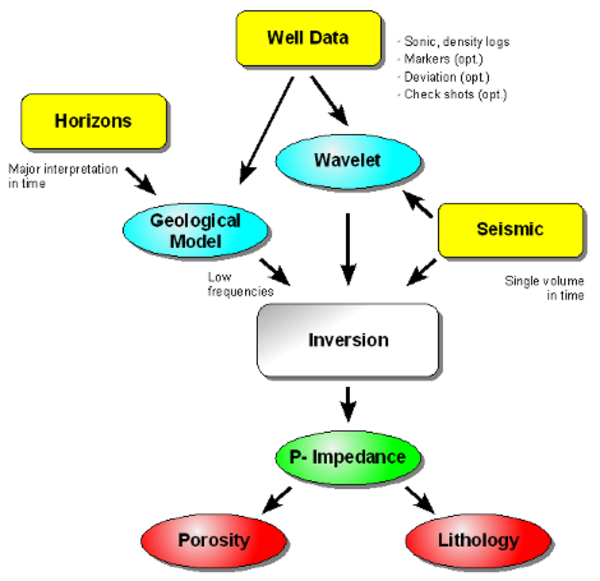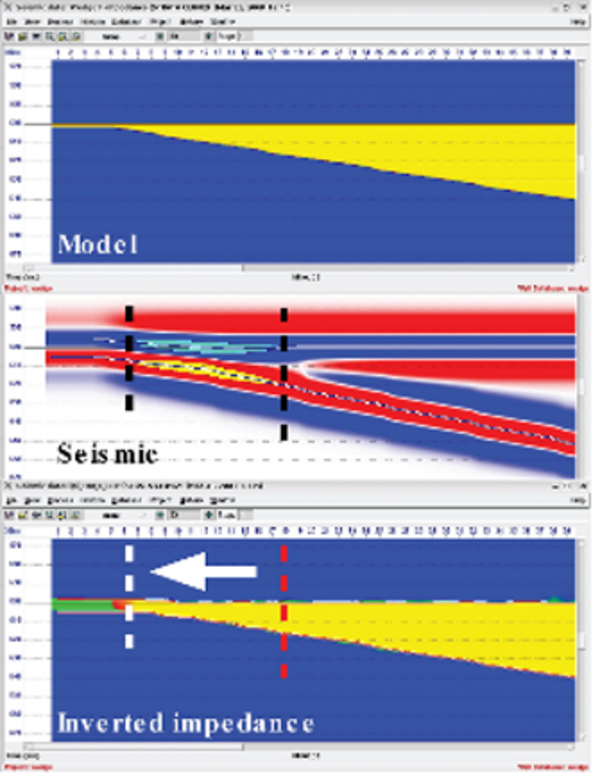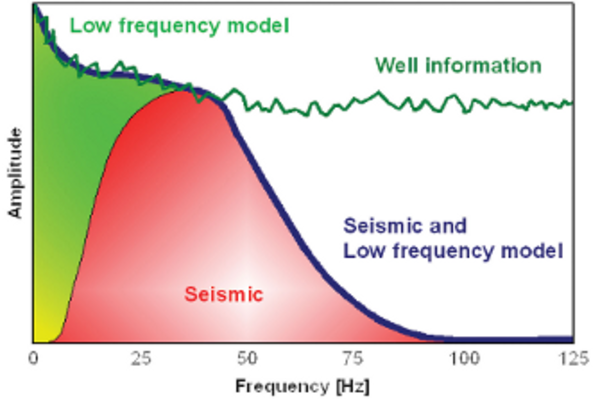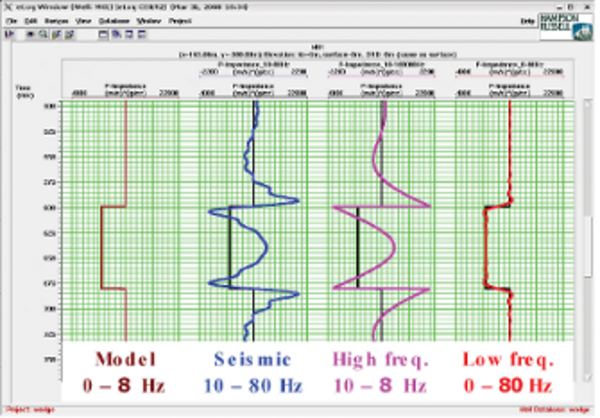Contact
DMT Petrologic GmbH & Co. KG
Karl-Wiechert-Allee 76
30625 Hannover, Germany
Phone: +49 511 5413917
E-Mail: info dmtpetrologic.com
dmtpetrologic.com
Post-stack Inversion
Post-stack inversion transforms a single seismic data volume into acoustic impedance through integration of the seismic data, well data and a basic stratigraphic interpretation. The resulting impedance volume can be used to predict reservoir properties away from well control.
Seismic inversion offers several benefits :
- Acoustic impedance is a layer property, whereas seismic data is an interface property. Typically stratigraphic interpretation is easier on impedance data.
- Reduction of wavelet effects, tuning and side lobes. Hence enhanced resolution of the sub-surface layers.
- Acoustic impedance is a physical rock property. It can be diÂrectly compared to well log measurements and allows a physically motivated link to reservoir properties.
- Often acoustic impedance can be related to porosity. The application of an impedance-porosity relation, derived from well log data, to the inverted impedance volume allows the mapping of the porosity distribution within the reservoir.
- Acoustic impedance can often be utilized as a reservoir disÂcriminator to localize individual reservoir compartments.
The data input to a post-stack inversion project typically consists of a set of wells containing sonic and density logs, optional check shots, formation markers and deviation surveys, a series of interpreted horizons and a seismic data volume.

- Generate acoustic impedance volumes from 2D or 3D seismicRelate acoustic impedance volumes to reservoir properties such as porosityUse sparse-spike or model-based inversionThe inversion is performed with the CGG Veritas Hampson-Russell software modules GeoView, eLog, and STRATA.

- Tuning removal
Constructive or destructive interference of waves from closely spaced events can lead to amplitude changes unrelated to any property variations within reservoir layers. An interpretation of bright spots may be misinterpreted as hydrocarbons, dimmed areas might miss profitable reservoir areas.
Typically seismic inversion reduces the tuning effect: for a pinching out low impedance reservoir within a uniform background, the seismic amplitudes change as the layer thickness decreases below the seismic tuning thickness. The inverted impedance, however, remains unchanged beyond such tuning point.
The inverted impedance may not completely resolve the thinning layer, but the corresponding layer thickness is considerably smaller than the tuning thickness. Typically inversion resolves thin beds down to half the seismic tuning thickness.

- Quantitative interpretation
Traditional structural interpretation of seismic reflectors has essentially been qualitative. Both the fine scale detail and the absolute properties are missing. During seismic inversion the missing information in the seismic is filled with low frequent information taken from a geological model derived from well data (with virtually infinite frequency content) and basic structural interpretation.
For a simple low impedance reservoir model within a uniform background the information content within different frequency ranges reveals primarily three effects: within seismic bandwidth the data is centered around zero, high frequent ripples appear along the whole data and strong side lobes replace the sharp outline of the reservoir layer. Restoration of the high frequencies does not cure the side lobes and zero line trend. It only removes the high frequent ripples. In contrast, restoration of the low frequencies leaves the ripples, but approaches the model very closely, enabling quantitative interpretation.
Data integration
Seismic inversion integrates data from various disciplines and domains (well data in depth, seismic interpretation and amplitudes usually in time). Typically the result is a more complete set of information than any of the individual processes can achieve alone (well correlation, geological model building, seismic AVO analysis). The successful completion of a seismic inversion study with the inherent QCs ensures rigorous consistency of all input data.

